After 10+ years, I’ve realized no single camera bag is perfect, but some get close. The Nanuk N-PVD 30L combines a high-quality bag with a useful storage system. In this review, I’ll go through what I loved and explain how it fits into Nanuk’s broader “N-CUBIK ecosystem.”
Dimensions and Build Quality
No matter how nice the bag is, it has to store the right amount of gear for your scenario. The N-PVD backpack I tested is 30 L and sits in the middle of Nanuk’s lineup. As a translation for photographers, a 30 L camera bag is about a medium-large on the bag continuum. It’s not massive but is just squeaking by in terms of carry-on size requirements (and will not qualify as a “personal item” if you get a persnickety flight attendant).
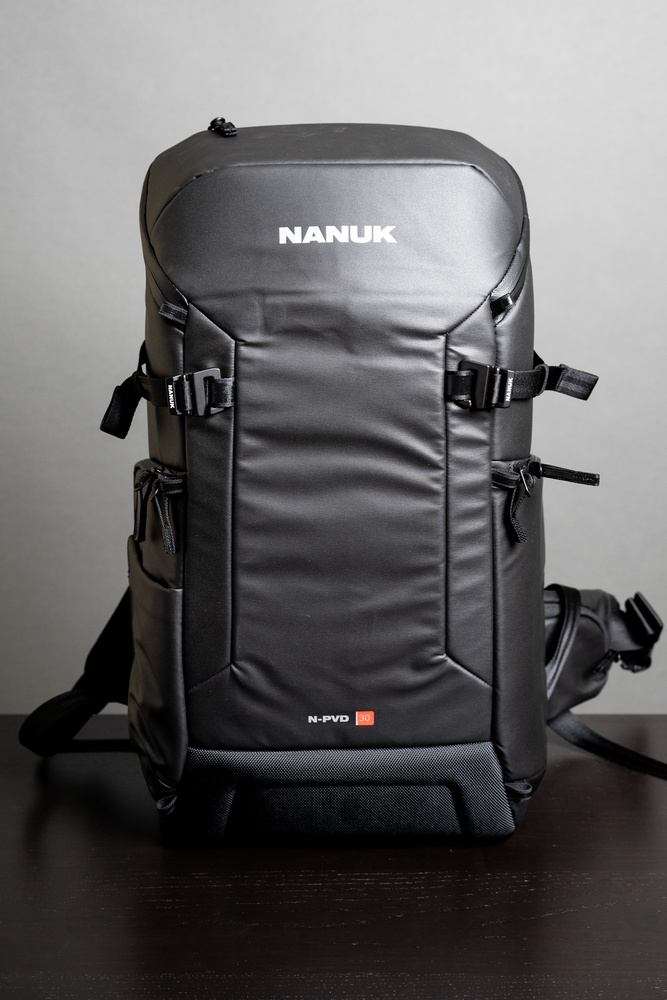
The actual measurements are 22 in x 12 in x 9 in or 60 cm x 30 cm x 20 cm. The bag layout is typical of recent larger camera bags, with a main access panel against your back, a side access panel on one side, and a top compartment. The bag weighs about 4.5 lbs or 2 kg empty.
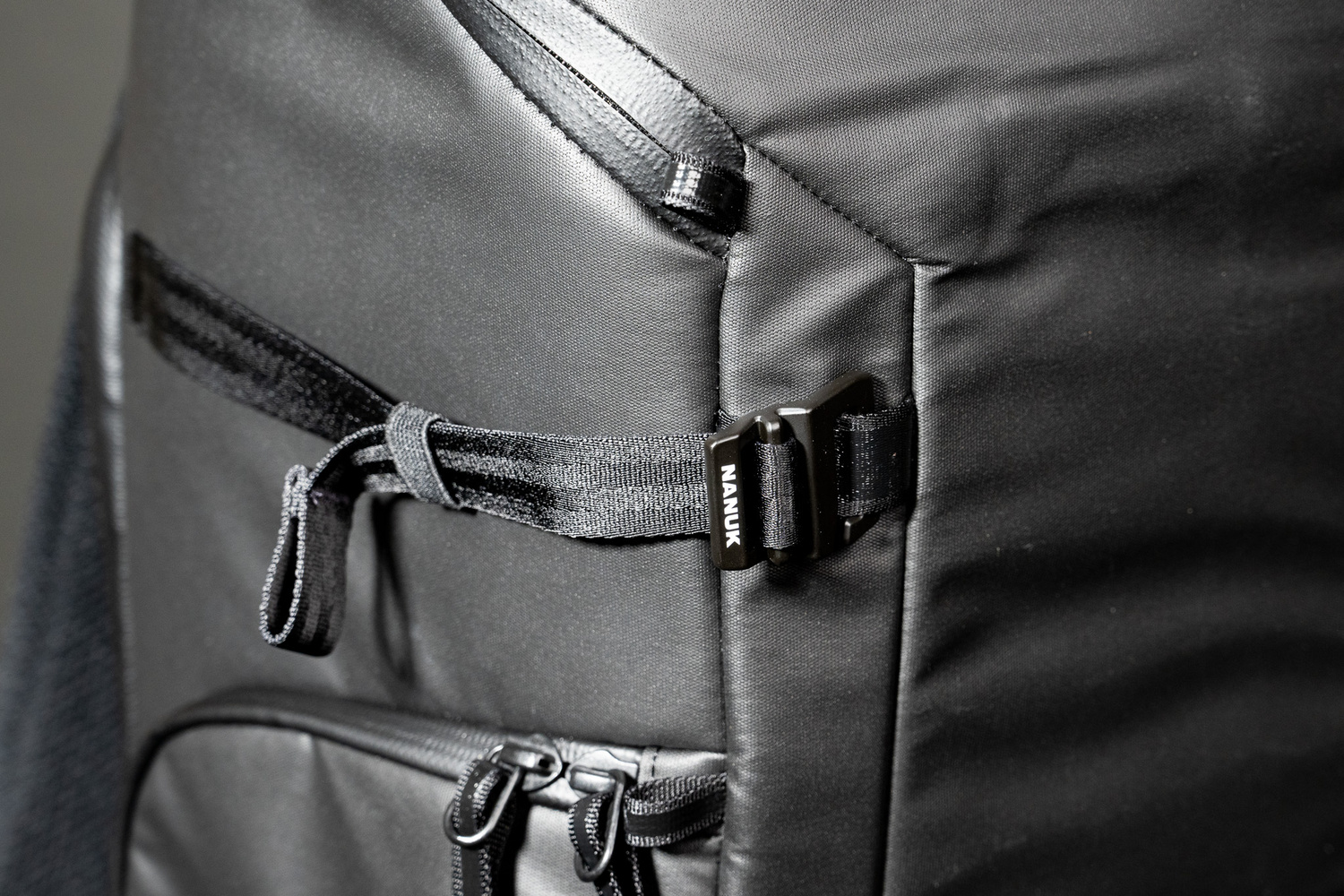
The 30 L should sit nicely on almost everyone. It might ride a bit large if you’re under about 5 and a half feet, but as it doesn’t have a frame, you could probably still cinch the straps to work fine. Despite not having a frame, the bag still retains a strong internal structure, thanks to double-layered foam padding throughout the body and a “compression-molded” base that helps it stand upright even when loaded up.

The exterior is very subdued with a matte black finish, straps, and zippers. The zippers are very high-quality YKK water-resistant models, which slide smoothly even while meshing to a water-resistant seal. While I’d consider this to be splash or even light-rain resistant, Nanuk offers even more protection via a removable rain cover that stores in a small pouch. The waterproof coatings are all PFOA-free, which is great for both the environment and your personal health, given the increasingly bad implications of PFAS.
Branding is also clean, with just Nanuk’s logo and a small N-PVD model logo. While this doesn’t scream “expensive camera bag” in a way that might attract unwanted attention, it does still look like a technical bag of some kind, so travelers visiting high-crime areas might want to look for a stealthier option.
Storage on the exterior is pretty simple: aluminum hooks secure a few straps around the top, with a pair of open and zippered side pockets rounding things out. There’s a small zippered slot at the top that could hold a boarding pass, documents, passport, etc. Only the top-compartment zippers include a spot for a luggage lock, leaving many of the other compartments unsecured—it’d be great to see other zippers get an option for locking in a future model. There are two small pockets built into the waist belt.
The side pouch supports a tripod, which is retained with those straps. You can get a pretty big tripod into this space, with the limiting factor being how asymmetric of a load on your back you can tolerate. I prefer an option to strap the tripod to the center axis or bottom of the bag. There are two loops at the bottom that could enable a jury-rigged tripod solution, but this would require some work.

To manage the load, broad padded shoulder straps with a wide length adjustment are included, along with a permanently fixed waist belt. The straps are soft, with a mesh ventilation. Both the waist belt and sternum strap have a nice, albeit plastic, buckle. Overall, I wouldn’t really see any issues with this setup unless you’ve got the bag stuffed to the gills with heavy gear, where it might feel a bit “under-strapped.” One issue I’ve had with past bags has come from them snagging or pilling clothes. If you’ve experienced similar issues, know that this bag shouldn’t cause those issues. No rough areas, seams, or even zippers should really be in contact with your back.
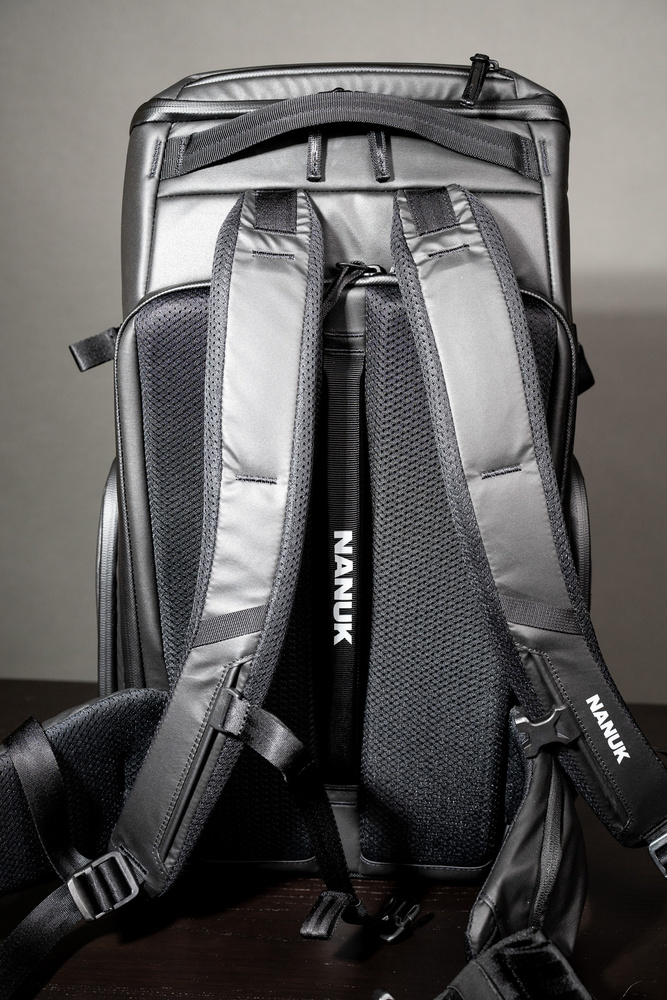
Interior Storage
On its own, the N-PVD 30 L has a pretty simple storage setup: one large inner compartment, which is accessed through the back or a side hatch, divided up with flexible panel dividers using Nanuk’s tri-base system. These are probably the nicest reconfigurable dividers I’ve seen out of backpack and hard case brands. The Velcro is very strong but pulls cleanly free, while the triangular ends really do help stabilize the bag and gear.
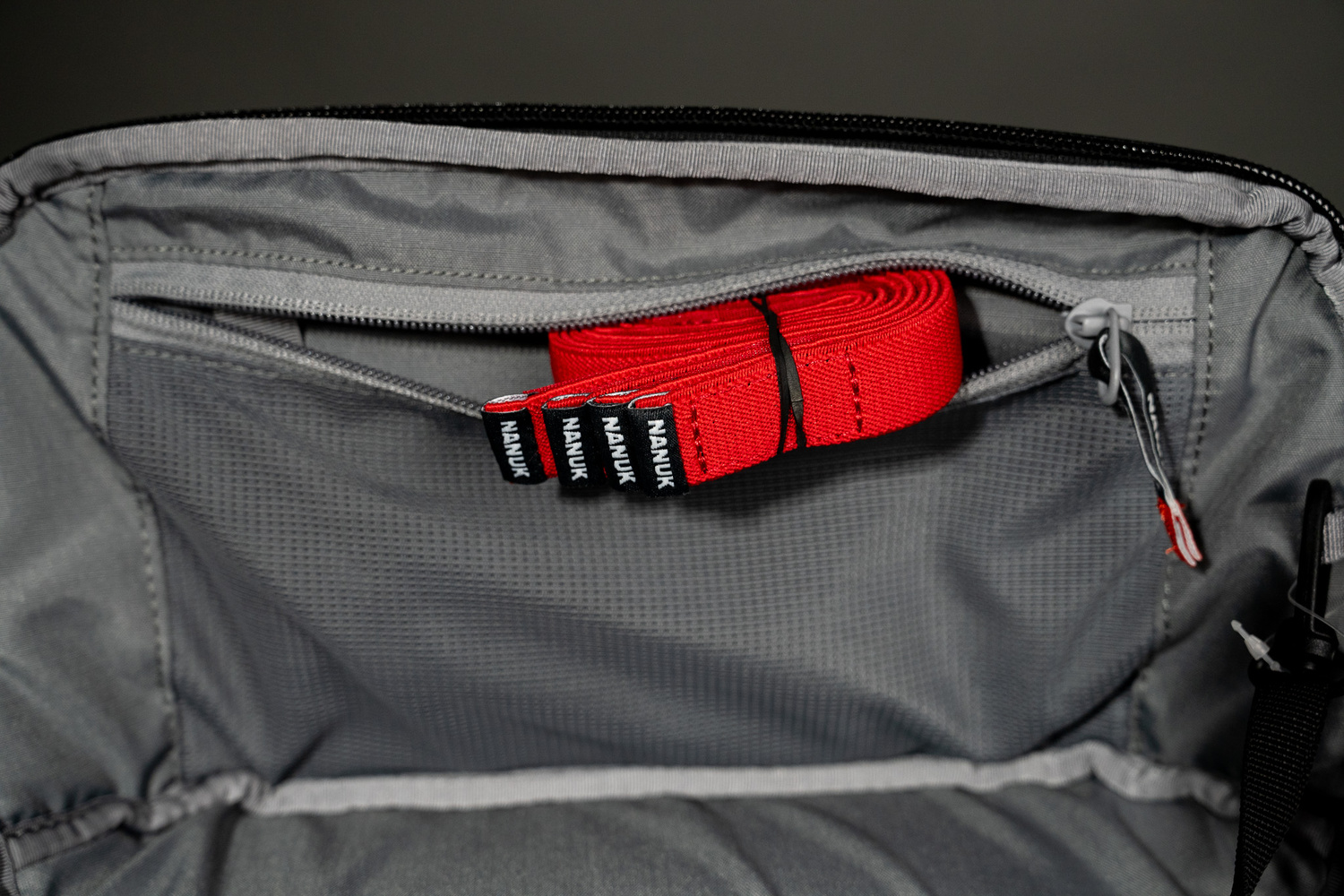
Slots placed throughout the panels enable the use of Nanuk’s included red tie-down straps for securing gear within each compartment. I really like this idea, as some lenses or bodies just don’t fill the space correctly, resulting in them sloshing around while moving, unless they were strapped down.
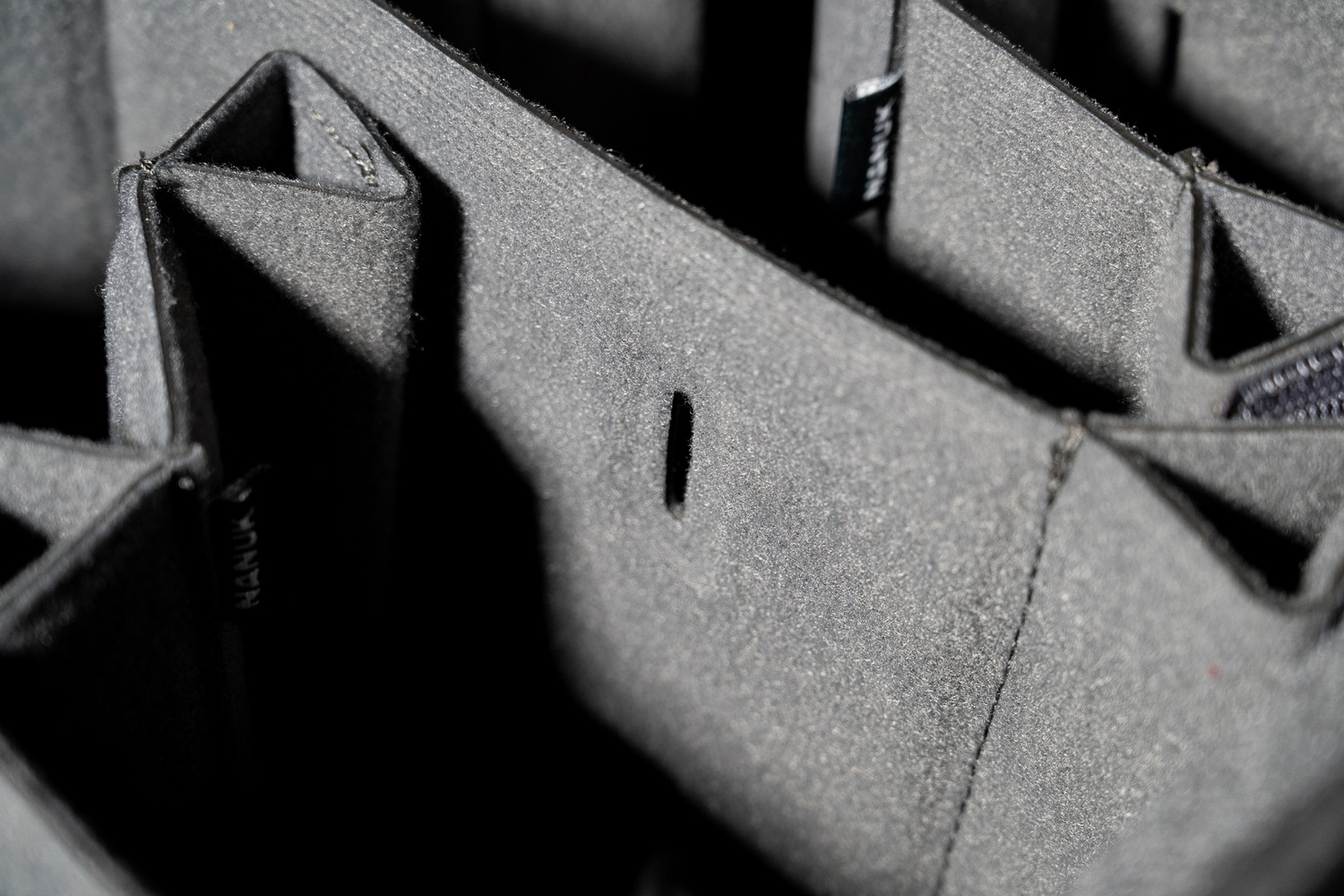
Where the magic really comes from is combining this backpack with the Cubik system. Like some other manufacturers, Nanuk offers a series of camera pouches, but what sets Nanuk’s apart is the cross-compatibility with their hard cases. I see this ecosystem having value in a ton of scenarios:
- Traveling? Keep in-flight items and some spare clothes in your backpack while carrying your gear in the hard case for protection and less back strain, switching the gear into your bag at the destination in 20 seconds.
- Add “loadouts” for drones, lighting, or camera gear by filling multiple small pouches, then load your bag as necessary.
- Store your gear at home in the pouch for protection from dust and incidental damage, then load your preferred bag or hard case in moments, without forgetting anything.
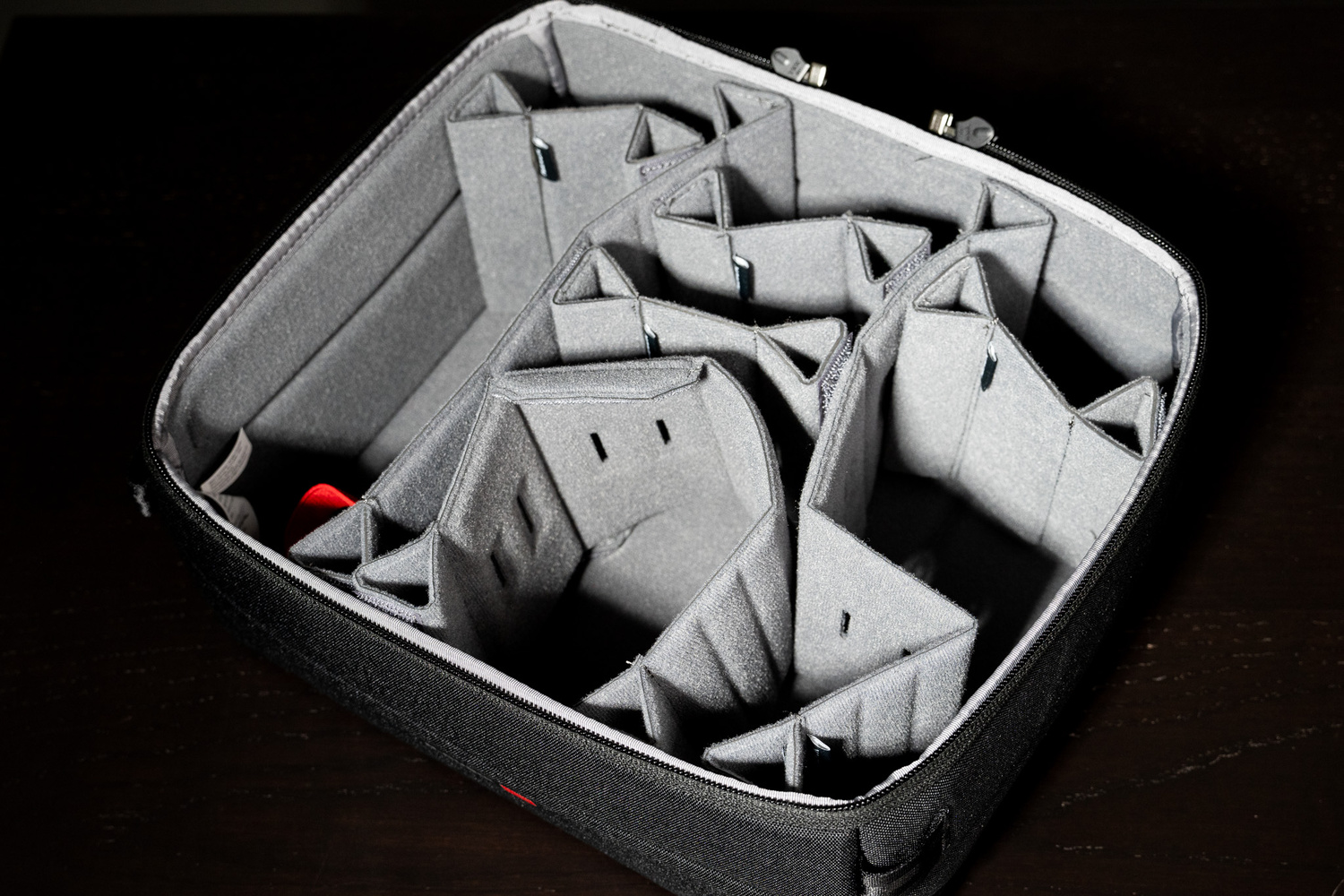
These pouches are available separately in a range of sizes, with the 30 L compatible with a single medium pouch size 13 or 17M, or two small pouches in 13 or 17S. A typical carry-on size hard case, like Nanuk’s 935, will accommodate 3 13S units, a 13M and 13S, or a 13L.
These pouches have the same tri-base dividers, along with handles, a business card slot, and the ability to be fully zipped up. One downside to running these units is that it’ll remove side access via the backpack. The other limitation is that these units are expensive. A 13M is currently going for $99 on B&H, with the 13S close behind at $79.
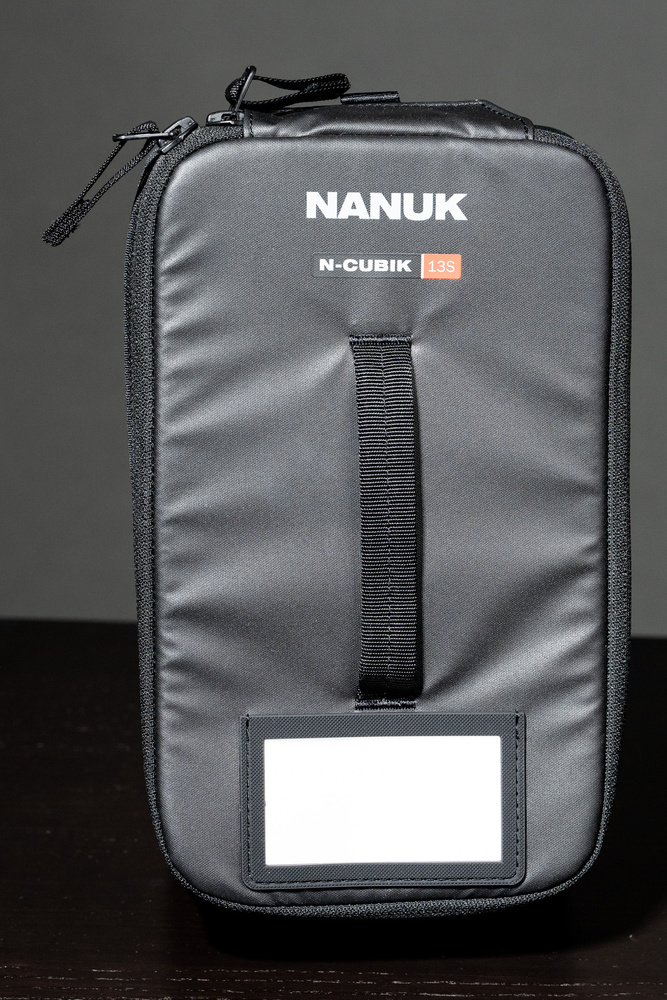
Rounding out the interior, there’s a padded laptop slot with room for a 16 in laptop, including compatibility with the MacBook Pro. There’s a retaining strap here, as well as another two smaller pouch areas. One thing I didn’t like is the addition of a zipper to the laptop sleeve area, as I think this could create a real pressure point if gear were to press up against the laptop or vice versa.
At the top, there’s a decent-sized compartment without dividers. It has the material to add dividers and even the holes for retaining straps, making it perfect for a folding drone or as a flex space for non-camera gear.
Overall, you could cram quite a bit into this bag. If you take advantage of every space, you could pack: 1 to 2 camera bodies, 3 large lenses, 1 action camera, 1 drone, a tripod, memory cards and batteries, a 16 in laptop, a tablet, and a good handful of assorted accessories into the bag. Fully loaded, however, I wouldn’t call that setup super-comfortable without a frame or more secure strapping. Dropping a lens and a bit of laptop weight would push this into the comfortable range, but it’s still nice to know you have that capacity.
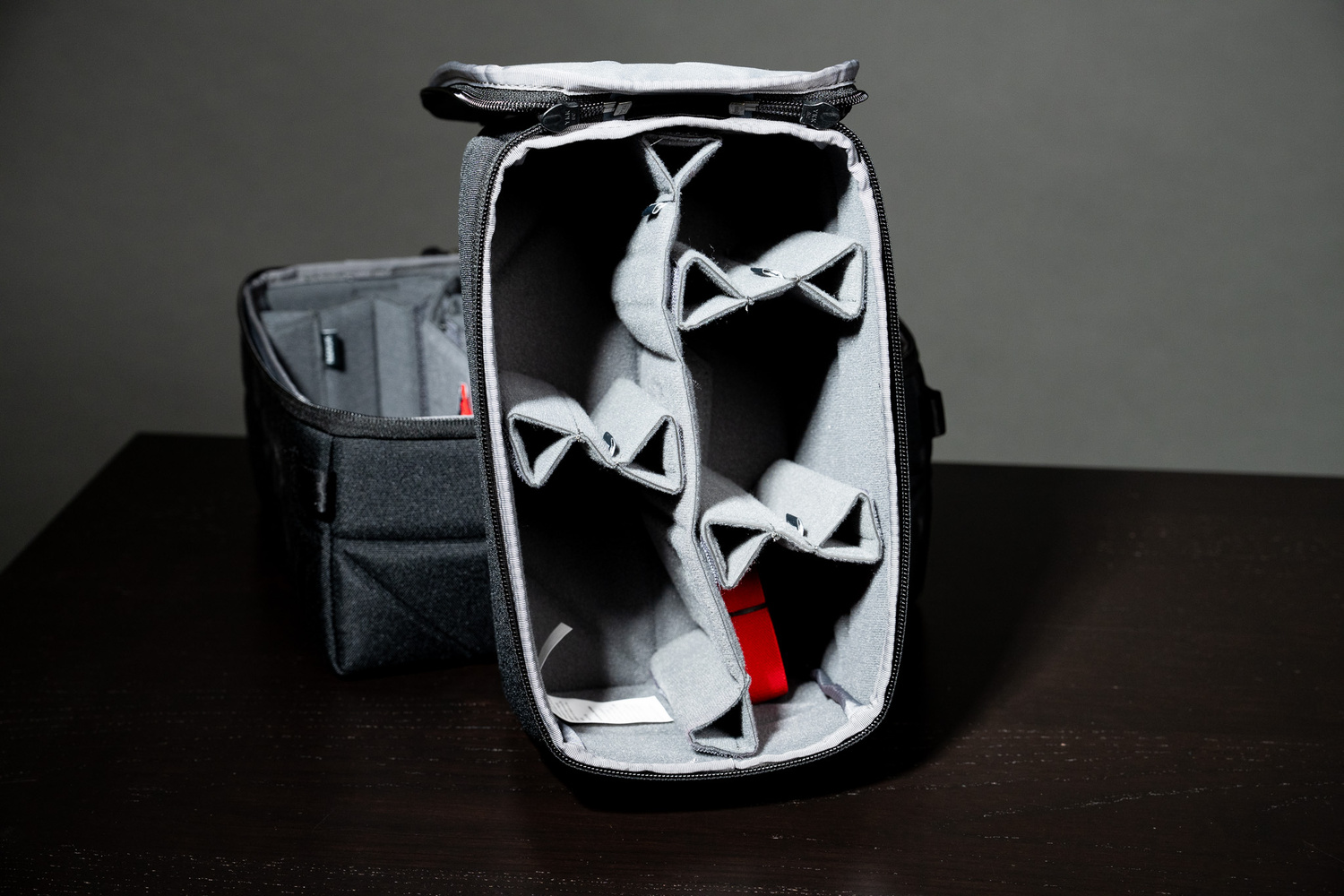
I think this bag gets a lot of things right. The choice of materials, overall design, capacity, and the Cubik compatibility all make for a really solid bag. The Cubik compatibility, in particular, is what I think sets this bag apart. In fact, the few issues I’d have with this bag would be addressed by using it with a hard case as part of a Cubik-powered pair: greater security, better ergonomics for heavy gear, more secure laptop storage, etc.
That backpack and hard case duo is so appealing that I feel like Nanuk is missing a middle bag: something like a 20 or 25 L day bag, compatible with the 13S or a hypothetical “15S or 15M” pouch, perfect for carrying the day’s gear and leaving the hard case back at the room. The 30 L is a bit big for this purpose, while the 18 L is incompatible with the N-Cubik system.
If you’re interested in purchasing the N-PVD 30L, the bag is available from B&H as a bag-only, or in a combo with a 13S Cubik module.
What I Liked
- Smart material and design choices across much of the bag
- Good attention to many details: YKK waterproof zippers, PFOA-free DWR, etc.
- Strong storage options even without the Cubik system, with great internal dividers
- Reasonable capacity to comfort ratio, unless you really stuff the bag
- Bonus storage area helps this be used as more than “just” a camera bag when traveling
What Could Be Improved
- Small design decisions, like a zipper against the laptop sleeve and tough-to-secure external zippers, may cause issues
- N-Cubik modules are quite expensive, limiting the ability to unify around this storage system
- Side-mounted tripod storage can throw off the whole bag’s feel when used








Having owned various backpacks and rollers over the past two decades, I’m so over pricey big-brand bags. Now, I really like my Slinger Alpine 200 - $49.95 from Adorama. Not ideal for long hikes, but a perfect complement to the $139.95 Slinger BigBag Simple 15 rolling backpack for bringing larger and smaller kits to event gigs around NYC on mass transit.
“There are two loops at the bottom that could enable a jury-rigged tripod solution, but this would require some work.” Do manufacturers ever consult a photographer when making their bags? Tripods are almost always an afterthought. I have only had one bag, out of many I have owned, that someone had put some thought into how to attach a tripod. Otherwise they attach and kind of flop around as you walk along.
Yeah, unfortunately tripods have been a sticking point on many bags.